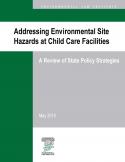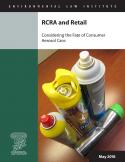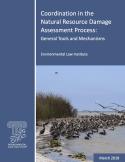
Research Reports
ELI publishes Research Reports available for free download that present the analysis and conclusions of the policy studies ELI undertakes to improve environmental law and policy. These reports contribute to education of the profession and disseminate diverse points of view and opinions to stimulate a robust and creative exchange of ideas. Those publications, which express opinions of the authors and not necessarily those of the Institute, its Board of Directors, or funding organizations, exemplify ELI’s commitment to dialogue with all sectors.
“Novel entities” can broadly be defined as “things created and introduced into the environment by human beings that could have disruptive effects on the earth system.” These may include synthetic organic pollutants, radioactive materials, genetically modified organisms, nanomaterials, and/or micro-plastics. This report, a background paper prepared for the Global Environment Facility (GEF), presents the results of a process developed to systematically identify novel entities that are relevant to the GEF.
Read More >
Environmental site hazards may arise from contamination caused by historical uses of a property, or from nearby activities that remain a source of pollution or other environmental health concerns. Identifying and remedying such hazards before a child care facility is licensed, as well as during facility operations, can help prevent and reduce harmful exposures to staff and children. It is especially important to prevent environmental exposures to young children, because their developing bodies may make them more vulnerable to the effects of contaminants.
Read More >
Minimizing waste generation includes diverting waste streams to reuse and recycling as well as recapturing materials. In devising new approaches for the management of materials and the diversion of wastes under RCRA, federal regulators can draw on their knowledge and years of experience working with particular sectors and materials. In the retail sector, managing discarded and returned consumer aerosol cans can hit the "tripwire" for RCRA ignitability, requiring their management as hazardous waste.
Read More >
As a result of the Deepwater Horizon oil spill, a number of different funding processes have been put in place to help restore and recover the Gulf of Mexico. The three main ones are the natural resource damage assessment (NRDA), the RESTORE Act, and the National Fish & Wildlife Foundation (NFWF) Gulf Environmental Benefit Fund (GEBF), which together will distribute over $16 billion. Each of these processes has its own objectives, timelines, governance structure, and opportunities for the public to engage.
Read More >
As a result of the Deepwater Horizon oil spill, a number of different funding processes have been put in place to help restore and recover the Gulf of Mexico. The three main ones are the natural resource damage assessment (NRDA), the RESTORE Act, and the National Fish & Wildlife Foundation (NFWF) Gulf Environmental Benefit Fund (GEBF), which together will distribute over $16 billion. Each of these processes has its own objectives, timelines, governance structure, and opportunities for the public to engage.
Read More >